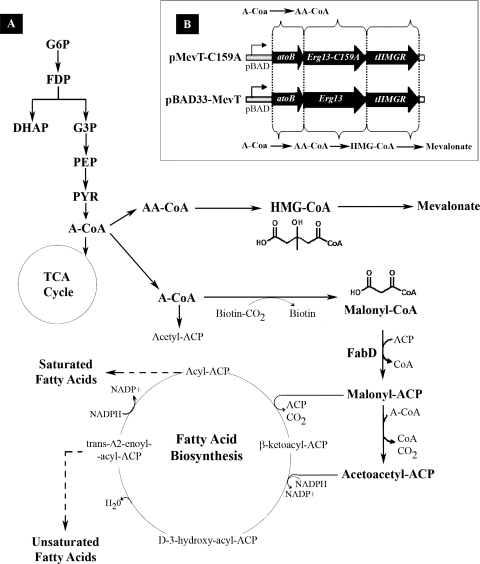FIG. 1.
(A) The heterologous pathway produces mevalonate from acetyl-CoA in three biochemical steps. The data presented in this article show that the growth inhibition associated with the pathway intermediate HMG-CoA is due to inhibition of malonyl-CoA:ACP transacylase (FabD) in E. coli's type II FAB pathway. The inhibition of the FAB pathway invokes a generalized stress response in the mevalonate-producing strain. As can be seen, the heterologous intermediate is similar in structure to malonyl-CoA, the native substrate for FabD. Abbreviations: A-CoA, acetyl-CoA; AA-CoA, acetoacetyl-CoA; HMG-CoA, hydroxymethylglutaryl-CoA; G6P, glucose-6-phosphate; FDP, fructose-1,6-bisphosphate; G3P, glyceraldehyde-3-phosphate; DHAP, dihydroxyacetone phosphate; PEP, phosphoenolpyruvate. (B) Genes of the heterologous mevalonate-producing pathway in E. coli as well as the inactive-pathway control, which due to a point mutation in ERG13, cannot produce HMG-CoA or mevalonate. Abbreviations: atoB, acetoacetyl-CoA thiolase gene; Erg13, HMG-CoA synthase gene; tHMGR, truncated HMG-CoA reductase gene; Erg13(C159A), inactive HMG-CoA synthase gene.

